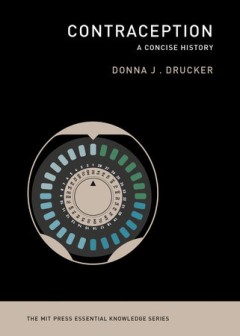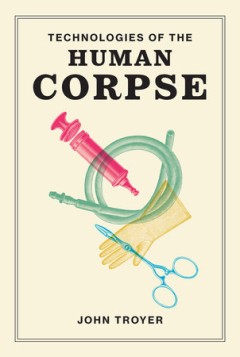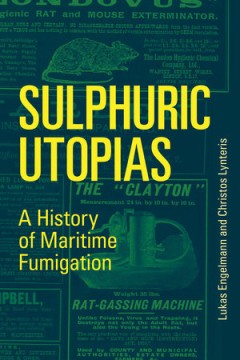Filter by

Youth Mental Health: A Paradigm for Prevention and Early Intervention
Experts discuss the potential of early intervention to transform outcomes for people with mental disorders. Mental illness represents one of the largest disease burdens worldwide, yet treatments have been largely ineffective in improving the quality of life for millions of affected individuals—in part because approaches taken have focused on late-stage disorders in adulthood. This volume s…
- Edition
- -
- ISBN/ISSN
- 9780262044547
- Collation
- -
- Series Title
- -
- Call Number
- -

The Matter of Facts: Skepticism, Persuasion, and Evidence in Science
How biases, the desire for a good narrative, reliance on citation metrics, and other problems undermine confidence in modern science. Modern science is built on experimental evidence, yet scientists are often very selective in deciding what evidence to use and tend to disagree about how to interpret it. In The Matter of Facts, Gareth and Rhodri Leng explore how scientists produce and use evi…
- Edition
- -
- ISBN/ISSN
- 9780262358279
- Collation
- -
- Series Title
- -
- Call Number
- -

Contraception: A Concise History
The development, manufacturing, and use of contraceptive methods from the late nineteenth century to the present, viewed from the perspective of reproductive justice. The beginning of the modern contraceptive era began in 1882, when Dr. Aletta Jacobs opened the first birth control clinic in Amsterdam. The founding of this facility, and the clinical provision of contraception that it enabled,…
- Edition
- -
- ISBN/ISSN
- 9780262357579
- Collation
- -
- Series Title
- -
- Call Number
- -

Technologies of the Human Corpse
The relationship of the dead body with technology through history, from nineteenth-century embalming machines to the death-prevention technologies of today. Death and the dead body have never been more alive in the public imagination—not least because of current debates over modern medical technology that is deployed, it seems, expressly to keep human bodies from dying, blurring the bounda…
- Edition
- -
- ISBN/ISSN
- 9780262358095
- Collation
- -
- Series Title
- -
- Call Number
- -

Sulphuric Utopias: A History of Maritime Fumigation
How early twentieth century fumigation technologies transformed maritime quarantine practices and inspired utopian visions of disease-free global trade. In the late nineteenth and early twentieth centuries, fumigation technologies transformed global practices of maritime quarantine through chemical and engineering innovation. One of these technologies, the widely used Clayton machine, blasted …
- Edition
- -
- ISBN/ISSN
- 9780262358194
- Collation
- -
- Series Title
- -
- Call Number
- -

Data paradoxes :the politics of intensified data sourcing in contemporary hea…
"Using Denmark's healthcare system as a case study, Hoeyer examines the implications of datafication in the healthcare industry, by focusing on the "paradoxes" brought forward with the use of types or forms of data for purposes other than originally intended"--OCLC-licensed vendor bibliographic record.
- Edition
- -
- ISBN/ISSN
- 9780262374156
- Collation
- 1 online resource.
- Series Title
- -
- Call Number
- -

Making modern medical ethics :how African Americans, anti-Nazis, bureaucrats,…
"A counter history of the birth of bioethics, which focuses on the dissenters and whistleblowers who challenged law and institutions rather than simply the development of new technologies"--OCLC-licensed vendor bibliographic record.
- Edition
- -
- ISBN/ISSN
- 9780262377416
- Collation
- 1 online resource.
- Series Title
- -
- Call Number
- -

Inducing immunity? :justifying immunization policies in times of vaccine hesi…
"An argument for the moral right of democratically elected governments to impose vaccine mandates on citizens, even those who are "vaccine hesitant.""--OCLC-licensed vendor bibliographic record.
- Edition
- -
- ISBN/ISSN
- 9780262378376
- Collation
- 1 online resource.
- Series Title
- -
- Call Number
- -

Mental patient :psychiatric ethics from a patient's perspective
"A philosopher explains how it feels to undergo a psychotic break and what mental health professionals need to know to assist recovery"--OCLC-licensed vendor bibliographic record.
- Edition
- -
- ISBN/ISSN
- 0262371219
- Collation
- 1 online resource.
- Series Title
- -
- Call Number
- -

Crowded out :the true costs of crowdfunding healthcare
"Crowded Out examines how charitable crowdfunding so quickly overtook public life, where it is taking us, and who gets left behind by this new platformed economy. While crowdfunding has become ubiquitous in our lives, it is largely misunderstood by the public: rather than a friendly free market "powered by the kindness" of strangers, crowdfunding is powerfully reinforcing inequalities and chang…
- Edition
- -
- ISBN/ISSN
- 9780262378611
- Collation
- 1 online resource
- Series Title
- -
- Call Number
- -
 Computer Science, Information & General Works
Computer Science, Information & General Works  Philosophy & Psychology
Philosophy & Psychology  Religion
Religion  Social Sciences
Social Sciences  Language
Language  Pure Science
Pure Science  Applied Sciences
Applied Sciences  Art & Recreation
Art & Recreation  Literature
Literature  History & Geography
History & Geography